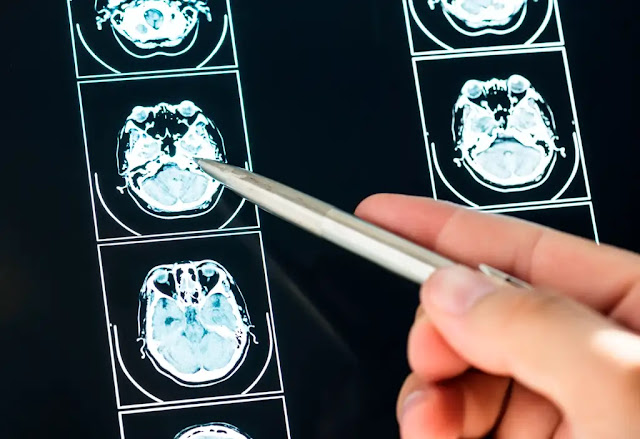Traumatic Brain Injury Treatment - TBI Guidelines
Traumatic brain injuries are among the most prevalent causes of death and disability in America. It should be noted that not every blow or jolt to the head causes a TBI. It is important to note that the term traumatic brain injury is used generally, however, there are two primary categories in terms of injuries to the brain. ABI’s (acquired brain injury) occur after the process of birth, and TBI’s occur as the result of a jolt or blow to the body or head. They can also develop as the result of a motion that starts or stops quickly. They can also manifest due to an object that pierces the skull and goes into the brain.

Understanding Initial and Secondary Injuries
Many people who have sustained traumatic brain injuries have found it difficult to transition back into the life they had before they were injured. There are several reasons behind this. It is important to recognize that not all traumatic brain injuries are the same. In addition to that, some people experience second brain injuries that manifest as the result of physiologic and metabolic changes that start at the occurrence of the primary injury.
Secondary injuries can last for as long as a few hours or even days. In many cases, the symptoms and the signs of TBI are not apparent, subtle, or are covered up by other co-occurring physiological processes during the process of urgent trauma care. This can make it difficult for people to get the type of care they need on an immediate and long-term basis. The process of recovering from these types of injuries can be unpredictable, and symptoms can linger for years. Sometimes people have to seek the assistance of a brain injury lawyer to help them get the help they need. There have been many technological advances made in the treatment of TBI’s in the last 10 years.
Evolving Treatment and Technology
TBI treatment guidelines? There have been several technological advances made in the treatment of TBI’s in the last 10 years. One of the most significant changes in the treatment of TBI’s is how they are diagnosed. In the last 10 years, there has been much more of an emphasis placed on diagnosing TBI’s as soon as a traumatic incident occurs. Most notably the NFL has changed its protocol in terms of how players are treated after players have received substantial hits on the field. Protocols, as identified by the National Institute of Neurological Disorders and Stroke, dictate that all TBI's should be assessed immediately.
Beyond Acute Concussion Evaluations, which is the baseline assessment for TBI evaluations, doctors rely heavily on diagnostic imaging to assess TBI’s. Brain scans are used to detect the severity of injury to the brain. These types of scans are also used to determine if surgical intervention is required to repair any type of damage to the brain. CT scans and MRIs are also commonly used in the assessment of TBI’s. Neuropsychological tests are used to determine how well the brain functions have been added to TBI assessment protocol in recent years. These tests help assess executive functioning, concentration, information processing, memory, problem-solving, and reaction time.
Traditionally treatment for mild TBI cases has relied on the monitoring of worsening symptoms, rest, and over-the-counter pain medications. When a person suffers a severe case of TBI surgical intervention is often required to remove necrotic brain tissue or other debris, repair fractures to the skull, remove hematomas and relieve pressure on the inside of the skull. Because of the dietary, mineral, and vitamin deficiencies that can occur as the result of a TBI over time, doctors in recent years have added nutritional supplemfents to treatment plans.
The whole team approach to treating TBI’s is notable regarding how technology has changed the treatment of TBS’s over the last 10 years. Traumatic brain injury neurology? Treatment plans for people who have TBI’s now involve neurologists, psychologists, nurses, speech, vocational, occupational, physical, and respiratory therapists. Each of these categories of medical professionals is needed because they each rely on a set of specific skills and technologies to perform the tasks necessary to help people with TBI’s perform activities that are essential to daily living. Each professional category is also needed to help treat emotional, occupational, physical, and cognitive issues.
As more studies over the last 10 years have shown, the treatment modalities used for the treatment of TBI’s don't necessarily meet the needs of every patient. Brain trauma therapy? There may be a large group of people who respond to certain therapies, but those same treatments might prove to be ineffective in other groups of people. Not all people experience TBI’s in the same manner. Doctors are more reliant on TBI research to deliver the latest therapies to their patients. This practice has been most transformative in patients who have plateaued. Targeted research has afforded doctors the ability to tailor treatment plans and based on the needs of each individual patient.
Promising Research
Currently, research is being done to stop traumatic brain injuries in their tracks. Scientists are studying an injection that has the potential to prevent swelling of the brain. This injection also has the potential of being able to reduce the likelihood that someone who has sustained a TBI will endure the effects of their injury long term. If the researchers at UT Health San Antonio are successful, their injection could be a game-changer for athletes, automobile accident victims, and people who have sustained a TBI as the result of a fall.

No comments